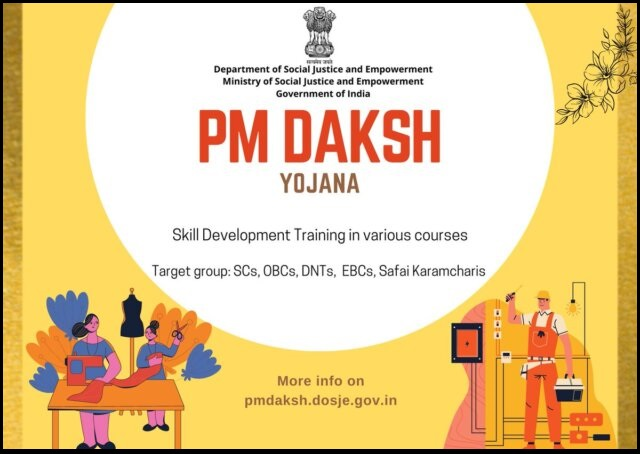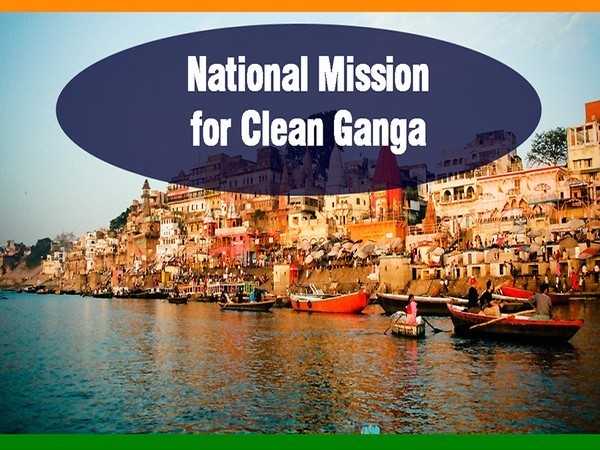Description

Copyright infringement is not intended
Context: “Swacchagraha: celebrating Swachhta and Swadhinta” organized by Ministry of Culture in collaboration with Sulabh International.
Details:
- Ministry of Culture, Ministry of Jal Shakti, Ministry of Housing and Urban Affairs in collaboration with Sulabh International organized an event on “Swacchagraha”.
- The event was organized under the aegis of Azadi Ka Amrit Mahotsav.
- It aims to promote mass awareness with the core thought of “Swachhta, Swadhinta and Sulabh”.
- A special screening of the film on Amrit Mahotsav was done on the occasion.
Swachhagraha:
- The Swachhagraha campaign draws inspiration from the largest and most effective mass movement 'Satyagraha'.
- It aims to develop a sustainable culture of cleanliness.
- It aims to promote Swaccha Bharat Abhiyaan by encouraging active participation of young citizens and creating youth leaders.
- It provides citizens a platform to not only take action but also inspire others in the society.
Swachh Bharat Mission:
- Swachh Bharat Mission or Swachh Bharat Abhiyan or Clean India Mission is a country-wide campaign initiated by the Government of India in 2014 to eliminate open defecation and improve solid waste management.
- It is the upgraded version of the Nirmal Bharat Abhiyan launched in 2009.
- The mission aimed to achieve an "open-defecation free" (ODF) India by 2 October 2019, the 150th anniversary of the birth of Mahatma Gandhi through construction of toilets.
- An estimated 90 million toilets were built with the support of government subsidy,
- Phase 1 of the Swachh Bharat Mission that lasted till October 2019.
- The objectives of the first phase of the mission also included eradication of manual scavenging, generating awareness and bringing about a behavior change regarding sanitation practices, and augmentation of capacity at the local level.
- Phase 2 is being implemented between 2020 and 2025 to help cement the work of Phase 1.
- The second phase of the mission aims to sustain the open defecation free status and improve the management of solid and liquid waste, while also working to improve the lives of sanitation workers.
- The Prime minister called the campaign Satyagraha se Swatchhagrah in reference to Gandhi's Champaran Satyagraha launched on 10 April 1916.
- The mission was split into two: rural and urban
- In rural areas "SBM-Gramin" was financed and monitored under the Ministry of Jal Shakti
- In urban areas "SBM - urban" was overseen by the Ministry of Housing and Urban Affairs.
- As part of the campaign, volunteers, known as Swatchhagrahis, or "Ambassadors of cleanliness", promoted the construction of toilets using a popular method called Community-Led Total Sanitation at the village level.
Significance of Swachh Bharat Mission:
- Health Benefits - Reducing diarrhea, Malaria among Children, Stillbirth and low birth weight.
- Open defecation results in bacterial infection in the intestines which reduces nutritional absorption → Poor learning outcomes among the children.
- Thus, Proper Sanitation and hygiene Provide for healthy and disease free living.
- Women Empowerment
- Pregnant women get infection from open defecation → Maternal mortality, Infant Mortality Chances increase.
- In rural areas, girls reduce water-food intake to avoid having to go for open defecation in day-time. This aggravates the Problem of malnutrition and anemia.
- Therefore, access to Sanitation is necessary for Gender empowerment.
- Economic Benefit
- Every household in an open defecation free village Saved about ₹ 50,000 per year due to lower Chances of disease, time Saved due to a Closer toilet → Improved economic Productivity.
- Enrolment ratio of girls in Schools improved → labor force Participation rate of women will improve in the future.
- Environmental Benefit
- Open defecation and municipal waste contaminate the water bodies and harm the flora-fauna. Access to Sanitation will help to prevent this.
Present Status:
- According to the dashboards maintained by ministries, more than 100 million individual household level toilets have been constructed in rural areas, and 6 million household toilets in urban areas.
- Nearly 6 million community and public toilets have also been constructed in the urban areas.
- More than 4,200 cities and more than 600,000 villages across the country have declared themselves open defecation free (ODF).
- More than 81.5 thousand wards in urban areas now have 100% door to door collection of solid waste and nearly 65 thousand wards practice 100% segregation of waste at source.
- According to UNICEF, the number of people without a toilet has been reduced from 550 million to 50 million.
- The World Bank reports that 96% of Indians who have a toilet use it.
- A study concluded that the construction of toilets under the program led to a reduction in incidence of sexual assault against women.
https://www.pib.gov.in/PressReleasePage.aspx?PRID=1803286








